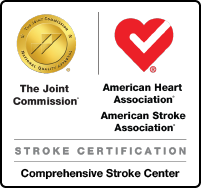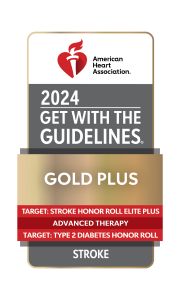Transient Ischemic Attack (TIA)

A transient ischemic attack (TIA) results when a blood clot blocks blood flow in a blood vessel in the brain.
A TIA usually lasts from a few seconds to a few minutes, though it can last up to 24 hours. It indicates an increased risk for stroke or, often, that a stroke will happen soon.
When stroke symptoms happen – and they happen suddenly – it’s impossible to immediately know if it’s a TIA or an ischemic stroke. Don’t wait to find out. At the first sign, call 911 immediately.
Transient Ischemic Attack Symptoms
Symptoms of a TIA are the same as for an ischemic stroke. TIA symptoms happen suddenly and stop when the clot dissolves or dislodges on its own. They usually cause no side effects or any permanent brain damage.
BE FAST for TIA
The BE FAST test is one of the easiest ways to remember stroke symptoms and determine if someone may be having a stroke or a TIA.
- Balance – Ask if the person feels dizzy or has trouble standing.
- Eyes – Ask if the person has blurred or double vision.
- Face – Ask the person to smile and see if one side of the face droops.
- Arms – Ask the person to raise both arms and see if one arm drifts downward.
- Speech – Ask the person to repeat a simple phrase like, “The sky is blue,” and note whether it’s repeated correctly or if speech is confused, slurred or garbled.
- Time – Call 911 immediately. If the person has any or several of these symptoms. Time lost is brain lost.
TIA Diagnosis
Call 911 immediately if you think you or someone you're with is having a stroke. It is critical to know the type and location of the stroke as soon as possible to ensure the best treatment and outcomes.
University of Maryland stroke specialists use advanced imaging such as CT (computed tomography) scan or MRI (magnetic resonance imaging) to diagnose all types of stroke and TIA.
TIA Risk Factors
Risk factors for TIA are the same as for ischemic and hemorrhagic stroke. There are risk factors you can’t control, like your age, gender and race. Symptoms you can control include blood pressure, diet and weight. Learn more about stroke symptoms and risk factors.
TIA Is an Urgent Warning
Think of a TIA as an urgent warning sign. Having one means you are at high risk for having an ischemic stroke. Immediately after a TIA visit, your doctor will discuss your risk factors and help you take steps to reduce the ones you can control. Your doctor may also give you medication to help reduce your risk for stroke.
Schedule an Appointment
If you or a loved need an appointment with a stroke specialist, call 410-328-4323 to make an appointment at the UM Neurology Care Center.



